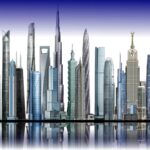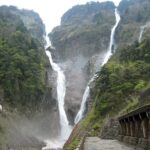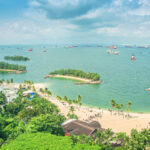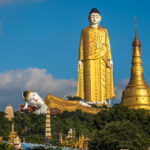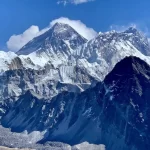
China is a country in East Asia. It is the world’s most populous country, with a population of more than 1.4 billion. China spans five geographical time zones and borders 14 countries, the second most of any country in the world after Russia. Covering an area of approximately 9.6 million square kilometers (3,700,000 sq mi), it is the world’s third or fourth largest country. The country consists of 23 provinces, five autonomous regions, four municipalities, and two Special Administrative Regions (Hong Kong and Macau). The national capital is Beijing and the largest city is Shanghai. (Source from Wikipedia)
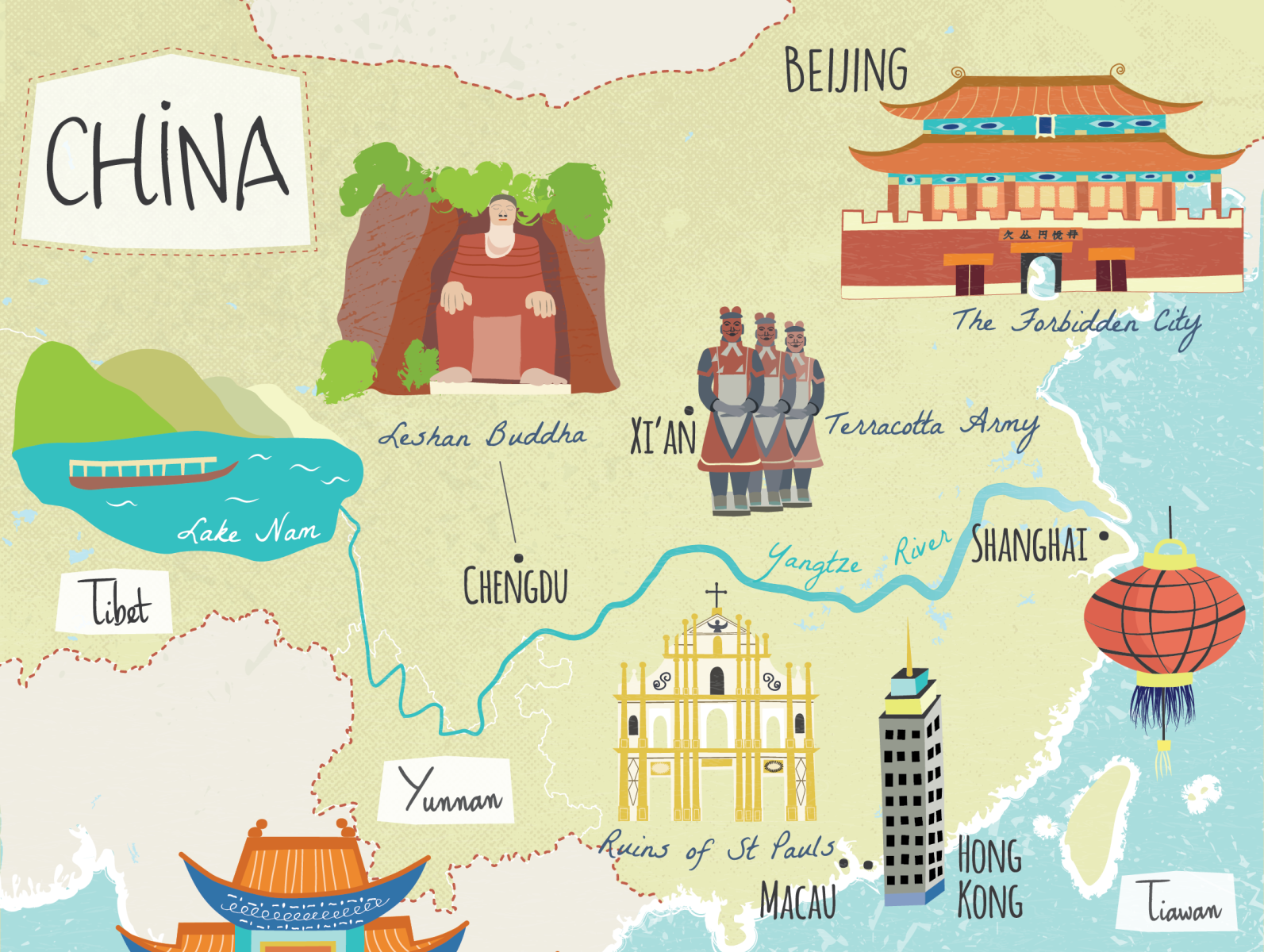
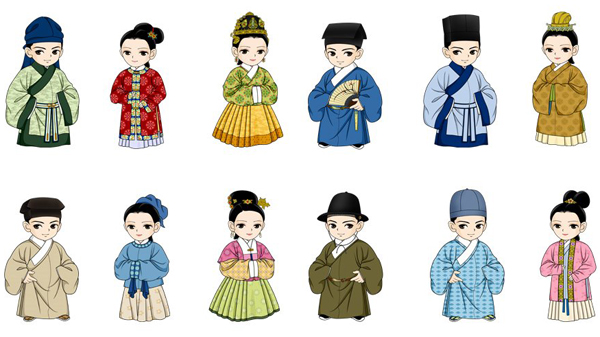
1. Yunnan — a Colorful Wonderland
Yunnan is a landlocked province in the southwest of the People's Republic of China. The province spans approximately 394,000 square kilometres (152,000 sq mi) and has a population of 48.3 million (as of 2018). The capital of the province is Kunming. Yunnan is situated in a mountainous area, with high elevations in the northwest and low elevations in the southeast. Most of the population lives in the eastern part of the province. In the west, the altitude can vary from the mountain peaks to river valleys by as much as 3,000 metres (9,800 ft). Yunnan is rich in natural resources and has the largest diversity of plant life in China. Of the approximately 30,000 species of higher plants in China, Yunnan has perhaps 17,000 or more. Yunnan's reserves of aluminium, lead, zinc and tin are the largest in China, and there are also major reserves of copper and nickel.
Where to go – Lijiang Old Town, Blue Moon Valley, Kunming Stone Forest, Green Lake, Songzanlin Monastery, Pudacuo National Park, Wuhualou inside Dali Ancient City, Dali Three Pagodas, Upper Tiger Leaping Gorge, Bada Rice Terraces, Water Splashing Festival at Dai Minority Park in Xishuangbanna.
![Quzonggong-area-in-Baima-Snow-Mountain-in-Diqing-Yunnan-1[1]](https://hobbymart.net/wp-content/uploads/2022/04/Quzonggong-area-in-Baima-Snow-Mountain-in-Diqing-Yunnan-11.jpg)
![li-river-615[1]](https://hobbymart.net/wp-content/uploads/2022/04/li-river-6151.jpg)
![9069259016_52d896692b_b[1]](https://hobbymart.net/wp-content/uploads/2022/04/9069259016_52d896692b_b1-768x327.jpg)
![711201410bdd860a43ac27a889a72f7c[1]](https://hobbymart.net/wp-content/uploads/2022/04/711201410bdd860a43ac27a889a72f7c1.jpg)
![songzanlin-temple[1]](https://hobbymart.net/wp-content/uploads/2022/04/songzanlin-temple1.jpg)
![2021032254806205[1]](https://hobbymart.net/wp-content/uploads/2022/04/20210322548062051-768x384.jpg)

2. Guilin — The Place to Go for Classic Chinese Countryside
Guilin is a prefecture-level city in the northeast of China's Guangxi Zhuang Autonomous Region. It is situated on the west bank of the Li River and borders Hunan to the north. Its name means "forest of sweet osmanthus", owing to the large number of fragrant sweet osmanthus trees located in the region. The city has long been renowned for its scenery of karst topography. Guilin is one of China's most popular tourist destinations, and the epithet "By water, by mountains, most lovely, Guilin" (山水甲天下) is often associated with the city. The State Council of China has designated Guilin a National Famous Historical and Cultural City, doing so in the first edition of the list.
Where to go – Li River, Longji Rice Terrace, Reed Flute Cave, Elephant Trunk Hill, Yangshuo, West Street.
![guilin-04-1800-1200[1]](https://hobbymart.net/wp-content/uploads/2022/04/guilin-04-1800-12001-768x512.jpg)

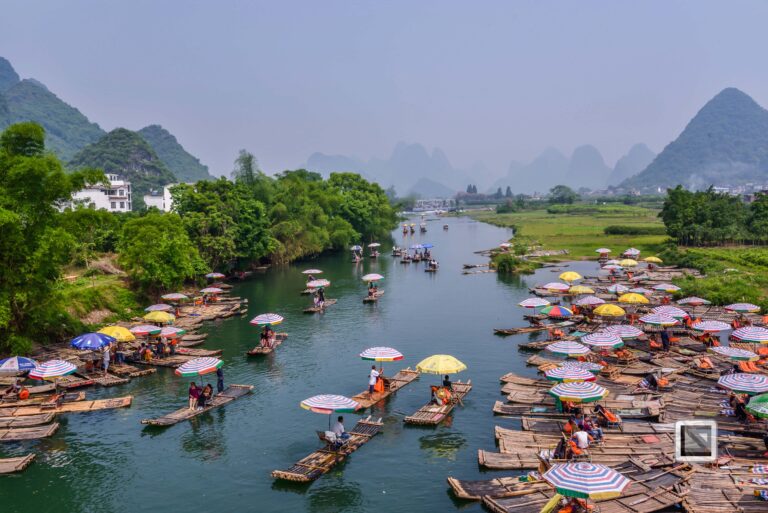
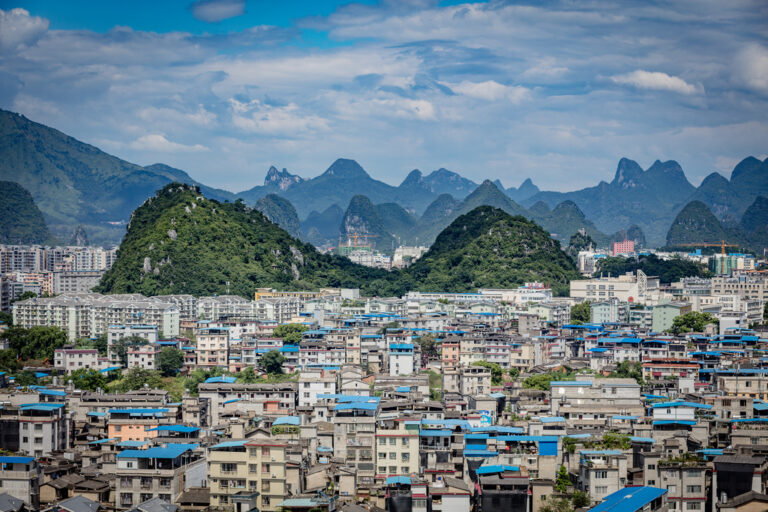
![Guilin-China[1]](https://hobbymart.net/wp-content/uploads/2022/04/Guilin-China1-768x512.jpg)
![100c0t000000il0ijBE0F_D_1180_558[1]](https://hobbymart.net/wp-content/uploads/2022/04/100c0t000000il0ijBE0F_D_1180_5581-768x363.jpg)

3. Chengdu — the City of Cute Giant Pandas
Chengdu Research Base of Giant Panda Breeding, or simply Chengdu Panda Base, is a non-profit research and breeding facility for giant pandas and other rare animals. It is located in Chengdu, Sichuan, China. Its stated goal is to "be a world-class research facility, conservation education center, and international educational tourism destination." Giant pandas are so cute, and many travelers want to see, or even hug, these lovely animals. Although there are giant pandas in zoos in various places around China, the best place to see and hug pandas is in Chengdu. Visitors can also take part in volunteer programs to take care of giant pandas.
Where to go – Giant Panda Breeding Research Base (Xiongmao Jidi) Wenshu Yuan Monastery. Mount Qingcheng. Jinli Pedestrian Street. Chengdu Metro.
![China-Chengdu[1]](https://hobbymart.net/wp-content/uploads/2022/04/China-Chengdu1-768x480.jpg)
![airport-3-chengdu-expat[1]](https://hobbymart.net/wp-content/uploads/2022/04/airport-3-chengdu-expat1-768x452.jpg)
![architectural-landscape-of-chengdu-jinjiang-picture-id892541616[1]](https://hobbymart.net/wp-content/uploads/2022/04/architectural-landscape-of-chengdu-jinjiang-picture-id8925416161-768x255.jpg)
![85170_00U_N20_website-1800x1125[1]](https://hobbymart.net/wp-content/uploads/2022/04/85170_00U_N20_website-1800x11251-1-768x480.jpg)
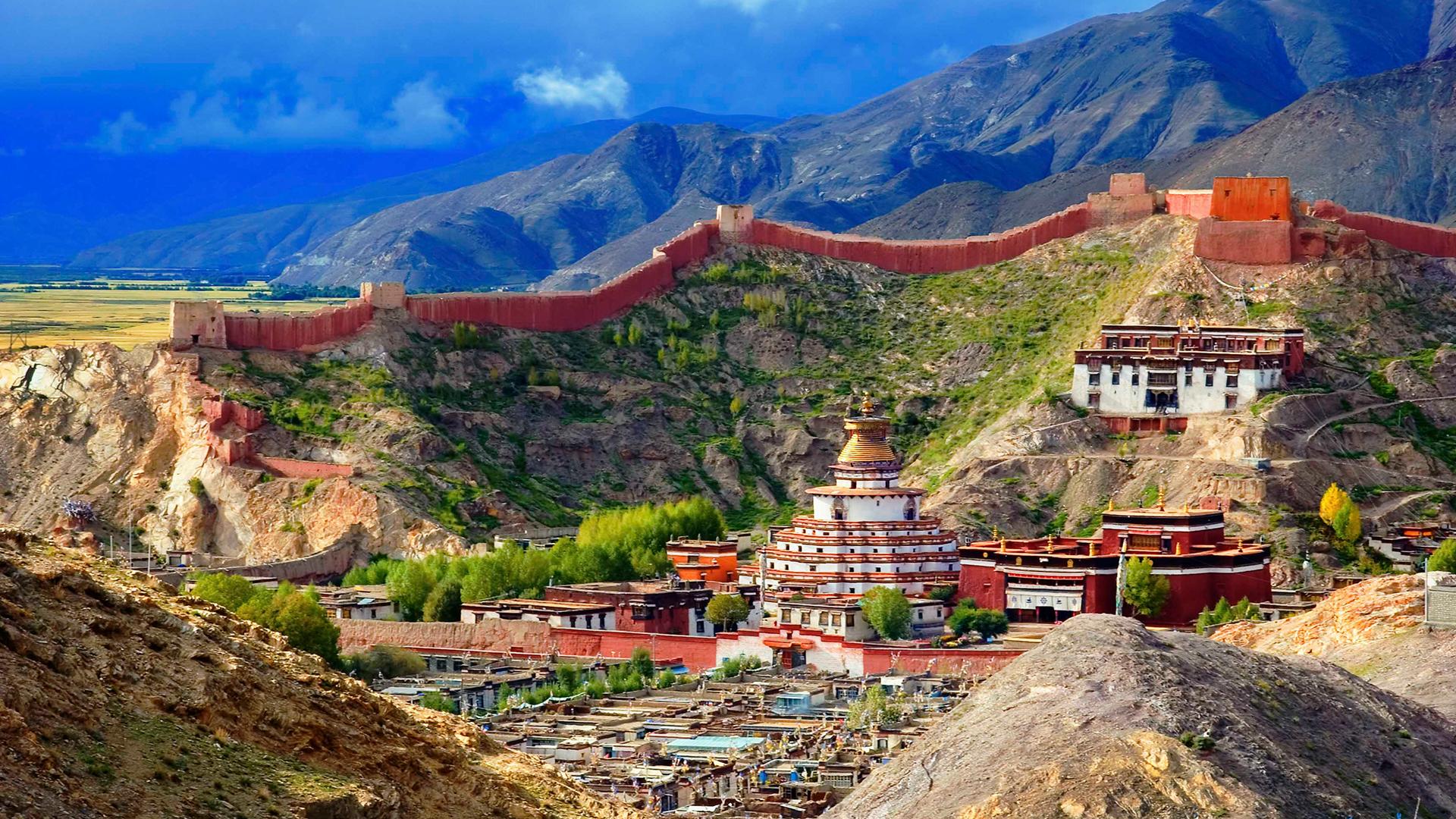
4. Tibet — Nothing but Pure Beauty
Tibet is a region in East Asia covering much of the Tibetan Plateau spanning about 2,500,000 km2 (970,000 sq mi). It is the traditional homeland of the Tibetan people as well as some other ethnic groups such as Monpa, Tamang, Qiang, Sherpa and Lhoba peoples and is now also inhabited by considerable numbers of Han Chinese and Hui people. Tibet is the highest region on Earth, with an average elevation of 4,380 m (14,000 ft). Located in the Himalayas, the highest elevation in Tibet is Mount Everest, Earth's highest mountain, rising 8,848.86 m (29,032 ft) above sea level.
Where to go – Potala Palace, Yarlung Tsangpo Grand Canyon, Sakya Monastery, Tashilunpo Monastery, Samye Monastery, Sera Monastery, Jokhang Temple, Yangbajing Hot Springs, Norbulingka and many more.

![Rawok-4-1024x684-1520000762[1]](https://hobbymart.net/wp-content/uploads/2022/04/Rawok-4-1024x684-15200007621-768x513.jpg)
![Gyantse[1]](https://hobbymart.net/wp-content/uploads/2022/04/Gyantse1-768x480.jpg)
![The-most-beautiful-places-to-visit-in-Tibet[1]](https://hobbymart.net/wp-content/uploads/2022/04/The-most-beautiful-places-to-visit-in-Tibet1-768x431.jpg)

5. Zhangjiajie — Pandora on Earth!
Zhangjiajie National Forest Park is a national forest park located in Zhangjiajie, Hunan Province, China. It is one of several national parks within the Wulingyuan Scenic Area. The most notable geographic features of the park are the pillar-like formations that are seen throughout the park. One of the park's quartz-sandstone pillars, the 1,080-metre (3,540 ft) Southern Sky Column, was officially renamed "Avatar Hallelujah Mountain" in honor of the movie Avatar in January 2010. The film's director and production designers said that they drew inspiration for the floating rocks from mountains from around the world, including those in Hunan province.
Where to go – Zhangjiajie National Forest Park, Suoxi Valley Nature Reserve, Tianzi Mountain, Yangjiajie Scenic Area, Zhangjiajie Grand Canyon.
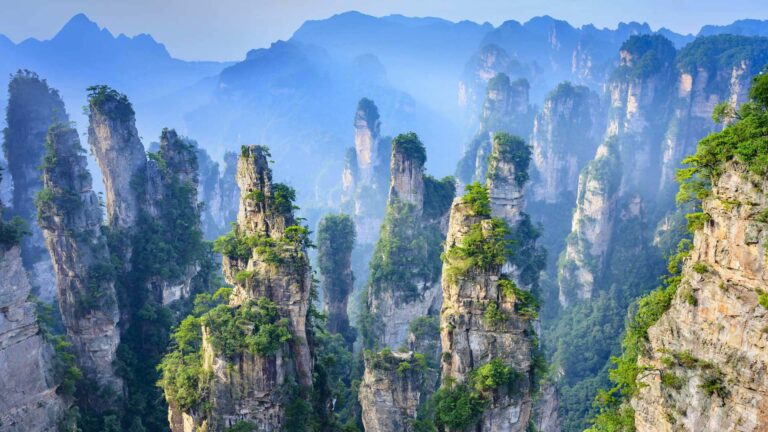
![zhangjiajie-grand-canyon[1]](https://hobbymart.net/wp-content/uploads/2022/04/zhangjiajie-grand-canyon1-768x576.jpg)
![the-zhangjiajie-glass-bridge-opens-1[1]](https://hobbymart.net/wp-content/uploads/2022/04/the-zhangjiajie-glass-bridge-opens-11-768x512.jpg)
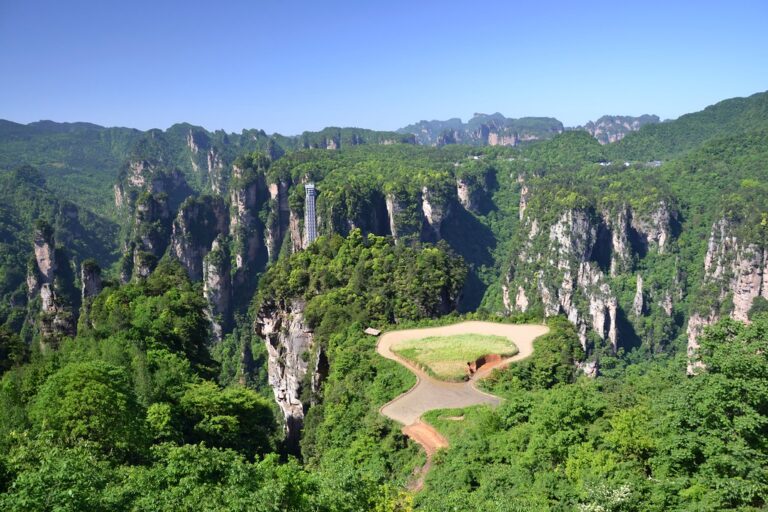
![original[1]](https://hobbymart.net/wp-content/uploads/2022/04/original1-768x511.jpg)


6. Huangshan — the Magical Yellow Mountains
Huangshan is a mountain range in southern Anhui Province in eastern China. It was originally called “Yishan”, and it was renamed because of a legend that Emperor Xuanyuan once made alchemy here. Vegetation on the range is thickest below 1,100 meters (3,600 ft), with trees growing up to the treeline at 1,800 meters (5,900 ft). The area is well known for its scenery, sunsets, peculiarly-shaped granite peaks, Huangshan pine trees, hot springs, winter snow and views of the clouds from above. Huangshan is a frequent subject of traditional Chinese paintings and literature, as well as modern photography. It is a UNESCO World Heritage Site and one of China's major tourist destinations.
![48061870811_db3c0fb23b_k[1]](https://hobbymart.net/wp-content/uploads/2022/04/48061870811_db3c0fb23b_k1-768x576.jpg)
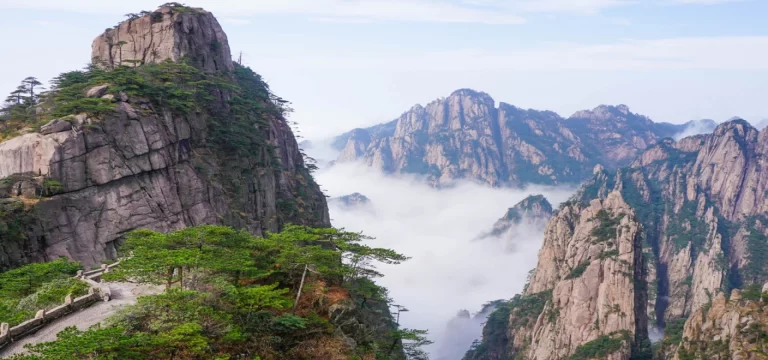
![maxresdefault[1]](https://hobbymart.net/wp-content/uploads/2022/04/maxresdefault1-4-768x432.jpg)
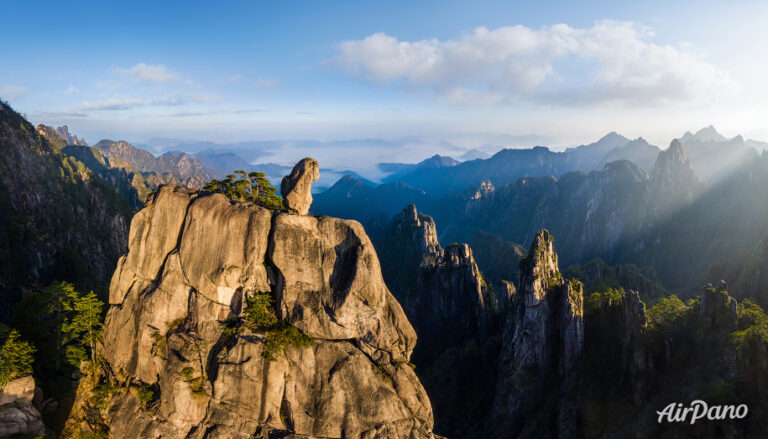
7. Xiamen — Where Mulan Was Filmed
Xiamen is a sub-provincial city in southeastern Fujian, People's Republic of China, beside the Taiwan Strait. It is divided into six districts: Huli, Siming, Jimei, Tong'an, Haicang, and Xiang'an. "The city is on the sea, and the sea is in the city" is a phrase referring to Xiamen, which is known as the "Garden on the Sea". Located on the southeast coast of China, Xiamen has beautiful seaside scenery and a pleasant climate. Apart from the beautiful scenery, there is the Hakka culture to discover. In Disney's movie Mulan, Mulan's house is set in the Fujian Tulou, which is representative of the Hakka culture.
Where to go – Gulangyu Island, Mount Wuyi, South Putuo Temple, and Taining Danxia Landform, Tianluokeng Tulou Cluster.
![xiamen-private-jet-charter-china[1]](https://hobbymart.net/wp-content/uploads/2022/04/xiamen-private-jet-charter-china1-768x512.jpg)

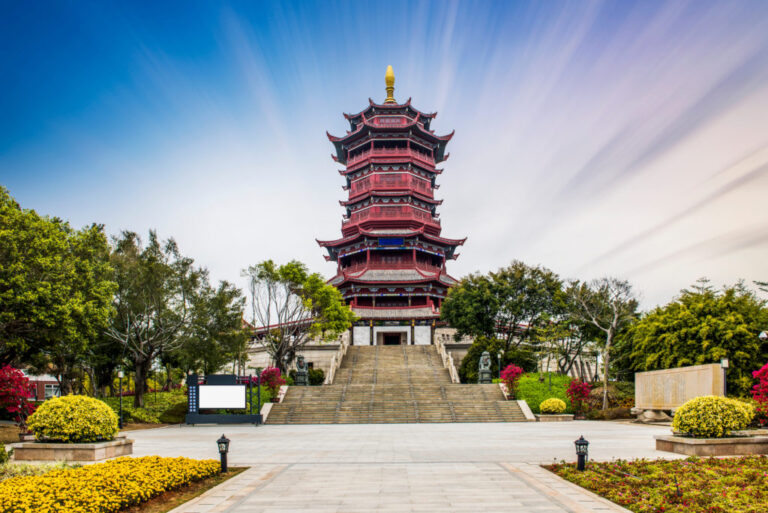
![Xiamen-pic[1]](https://hobbymart.net/wp-content/uploads/2022/04/Xiamen-pic1-768x252.jpg)
![media_gallery-2018-04-3-20-Gulangyu_Island__Xiamen_72ed3112395fdd249c3b4018b983d5ec[1]](https://hobbymart.net/wp-content/uploads/2022/04/media_gallery-2018-04-3-20-Gulangyu_Island__Xiamen_72ed3112395fdd249c3b4018b983d5ec1.jpg)

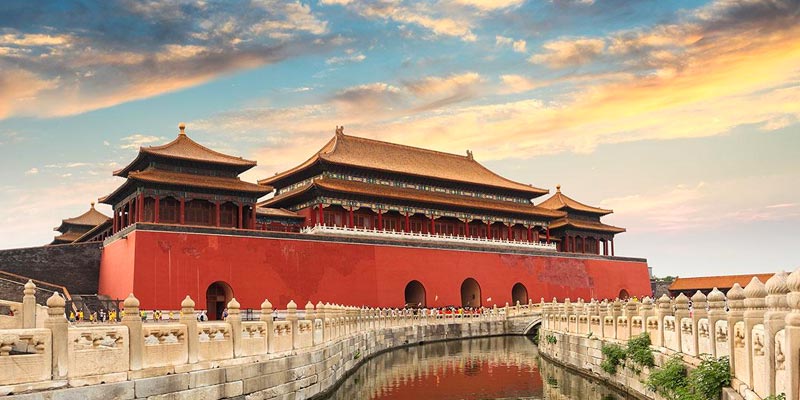
8. Beijing — Visit the Great Wall
Beijing is the capital of the People's Republic of China. It is the world's most populous national capital city, with over 21 million residents within an administrative area of 16,410.5 km2 (6336 sq. mi.). Beijing, capital of China, is the most popular tourist destination in China every year. In 2022 Beijing should continue to be the best seller, where you can get the maximum experience of Chinese culture and history for one destination. The Forbidden City and the Great Wall draw millions of visitors every year.
Where to go – Badaling Great Wall, Tiananmen Square, Forbidden City, Summer Palace, Prince Gong’s Mansion, Temple of Heaven, Wangfujing Street, Beijing Zoo, Yonghe Temple, Sanlitun.
![chinese-temple-and-forbidden-city-in-a-day-636217080-f9f58e9618db4409b22733fcf9591901[1]](https://hobbymart.net/wp-content/uploads/2022/04/chinese-temple-and-forbidden-city-in-a-day-636217080-f9f58e9618db4409b22733fcf95919011-768x512.jpg)
![77a9f7461663c88a4fae9437b8fc48b6[1]](https://hobbymart.net/wp-content/uploads/2022/04/77a9f7461663c88a4fae9437b8fc48b61.jpg)
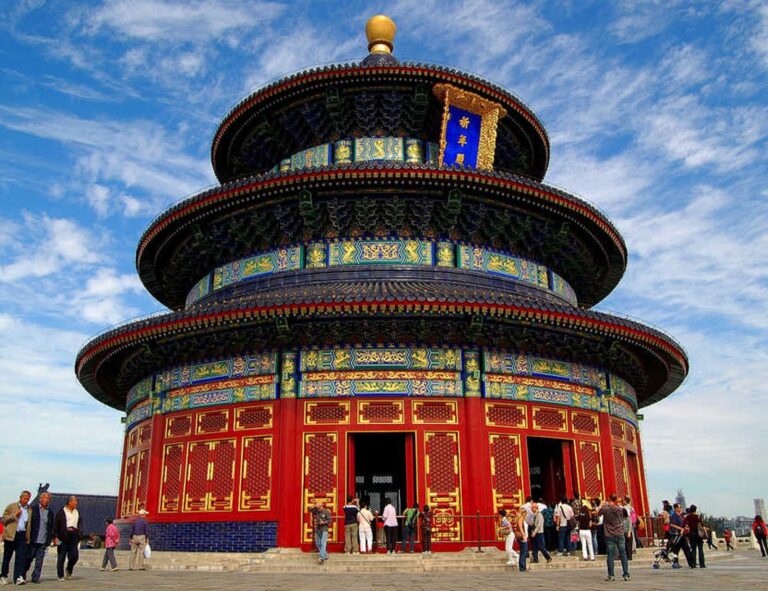
![17oyevnqwywsxjpg[1]](https://hobbymart.net/wp-content/uploads/2022/04/17oyevnqwywsxjpg1-768x432.jpg)
9. Xi'an — See the Terracotta Army
Xi'an is the capital of Shaanxi Province. A sub-provincial city on the Guanzhong Plain in Northwest China, it is one of the oldest cities in China, the oldest prefecture capital and one of the Chinese Four Great Ancient Capitals, having held the position under several of the most important dynasties in Chinese history, including Western Zhou, Qin, Western Han, Sui, Northern Zhou and Tang. The city is the starting point of the Silk Road and home to the UNESCO World Heritage set Terracotta Army of Emperor Qin Shi Huang.
Where to go – Bell Tower and Drum Tower, Muslim Quarter, Giant Wild Goose Pagoda and Small Wild Goose Pagoda, Stele Forest, Famen Temple, Shaanxi History Museum, Huaqing Hot Springs, The Mausoleum of Qin Shi Huang and his Terracotta Army.
![b4a2762781ef4ca5adb26834db92c626[1]](https://hobbymart.net/wp-content/uploads/2022/04/b4a2762781ef4ca5adb26834db92c6261-768x432.png)
![26819362827946e6a04587b7eb360dbc[1]](https://hobbymart.net/wp-content/uploads/2022/04/26819362827946e6a04587b7eb360dbc1-768x512.jpg)
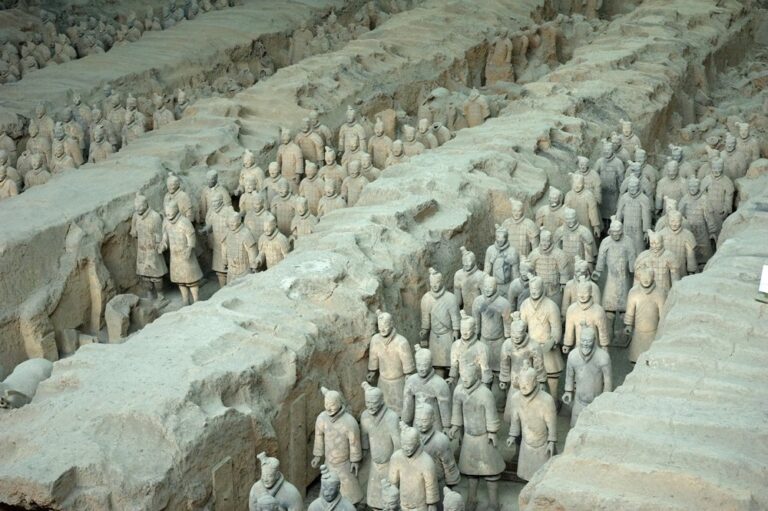
![caption[1]](https://hobbymart.net/wp-content/uploads/2022/04/caption1.jpg)
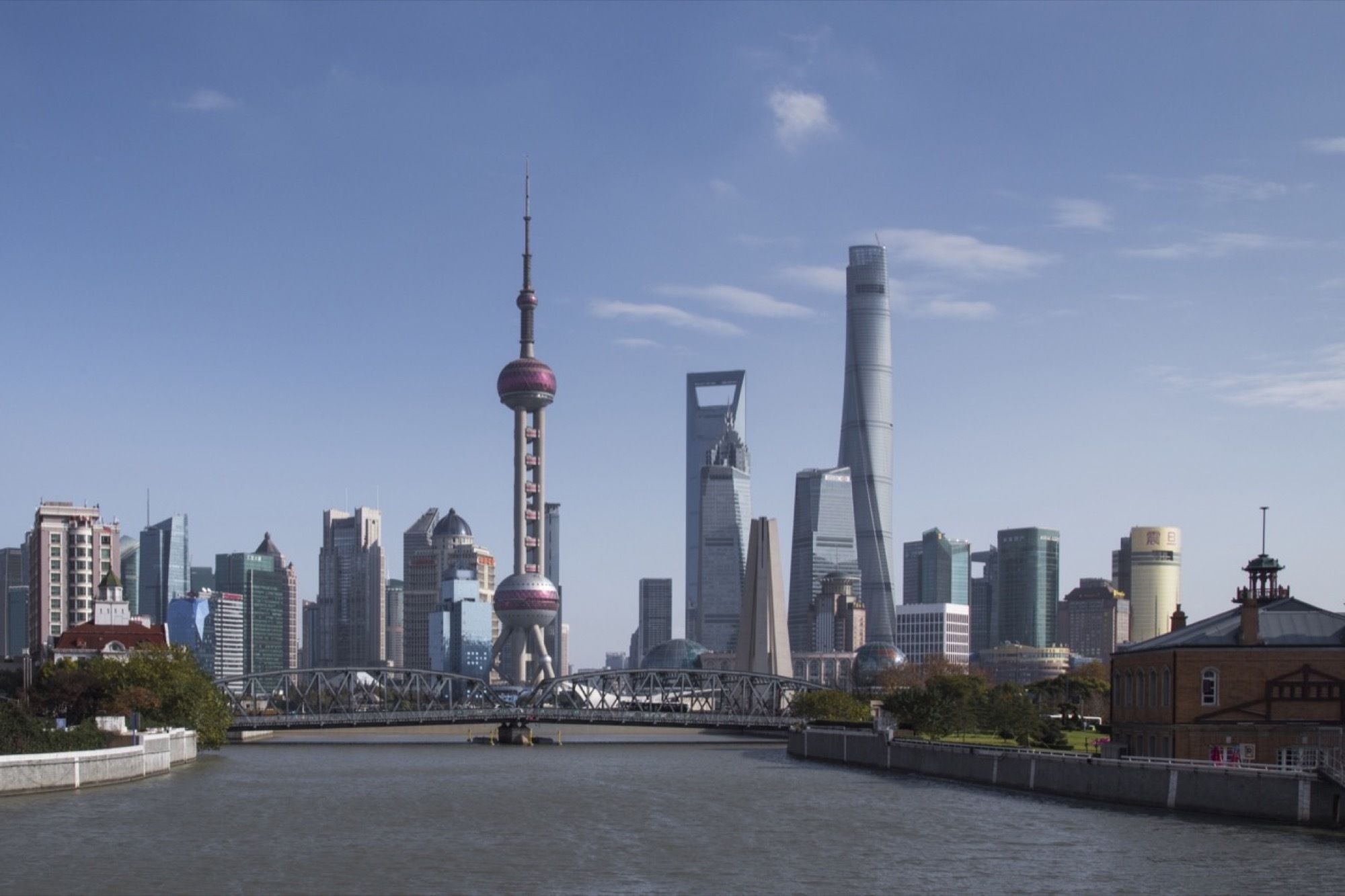
10. Shanghai
Shanghai is one of the four direct-administered municipalities of the People's Republic of China. The city is located on the southern estuary of the Yangtze River, with the Huangpu River flowing through it. With a population of 24.89 million as of 2021, Shanghai is the most populous urban area in China and the most populous city proper in the world. It is the only city in East Asia with a GDP greater than its corresponding capital.
Where to go – The Bund, Oriental Pearl TV Tower, Yu Garden & Bazaar, Shanghai Disney Resort, Huangpu River Cruise, Nanjing Road.
![3ecc5140a0924dd49c617498e20f7812[1]](https://hobbymart.net/wp-content/uploads/2022/04/3ecc5140a0924dd49c617498e20f78121-768x432.jpg)
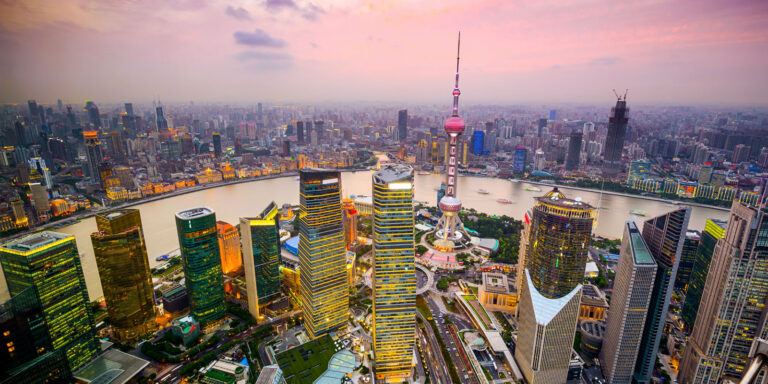
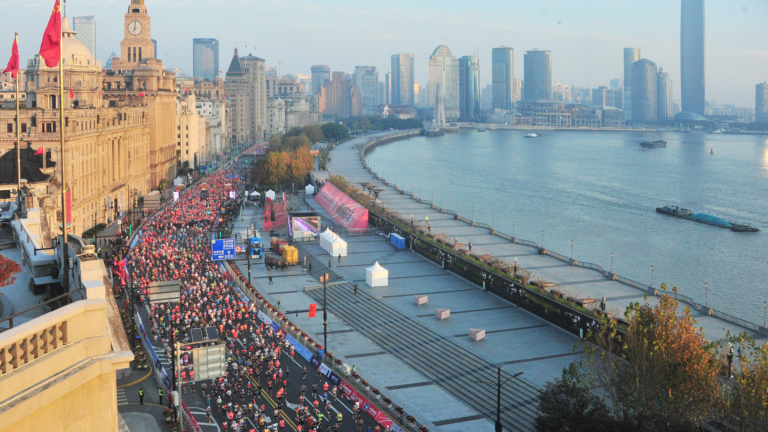
![summer-global-internship-shanghai-glance[1]](https://hobbymart.net/wp-content/uploads/2022/04/summer-global-internship-shanghai-glance1-768x360.jpg)

11. Suzhou
Suzhou is a major prefecture level city in Jiangsu of East China, its city center being 100 km (62 mi) west of that of Shanghai – and outer suburbs of the two global hubs meet. It is a major economic center and focal point of trade and commerce. The city's north waterfront is on a lower reach of the Yangtze whereas it has its more focal south-western waterfront on Lake Tai – crossed by several waterways, its district belongs to the Yangtze River Delta region.
Where to go – Tiger Hill, Pingjiang Road, Tongli Town, The Classical Gardens of Suzhou.
![Things-to-do-in-Suzhou-China[1]](https://hobbymart.net/wp-content/uploads/2022/04/Things-to-do-in-Suzhou-China1-768x512.jpg)
![suzhou[1]](https://hobbymart.net/wp-content/uploads/2022/04/suzhou1.jpg)
![29742999371_159bd85d50_b[1]](https://hobbymart.net/wp-content/uploads/2022/04/29742999371_159bd85d50_b1-768x512.jpg)
![Suzhou-Venice-of-China-HERO-MarinaD_37-e1559756816408[1]](https://hobbymart.net/wp-content/uploads/2022/04/Suzhou-Venice-of-China-HERO-MarinaD_37-e15597568164081-768x514.jpg)
12. Hangzhou
Hangzhou is the capital and most populous city of Zhejiang, People's Republic of China. It is located in the northwestern part of the province, sitting at the head of Hangzhou Bay, which separates Shanghai and Ningbo. Hangzhou grew to prominence as the southern terminus of the Grand Canal and has been one of China's most renowned and prosperous cities for much of the last millennium. Its West Lake, a UNESCO World Heritage Site west of the city, is among its best-known attractions.
Where to go – West Lake (Xi Hu), Lingyin Temple, Hangzhou Songcheng, Xixi Wetland Park, Fei Lai Feng, National Tea Museum, Longjing tea fields, Jinghang Grand Canal Hangzhou, Hefang Street, Former residence of Xueyan Hu.
![1A0o1900000162lbq67F8[1]](https://hobbymart.net/wp-content/uploads/2022/04/1A0o1900000162lbq67F81-768x512.jpg)
![0151d7207f5340258b108994_cut_800x500_117[1]](https://hobbymart.net/wp-content/uploads/2022/04/0151d7207f5340258b108994_cut_800x500_1171-768x480.jpg)
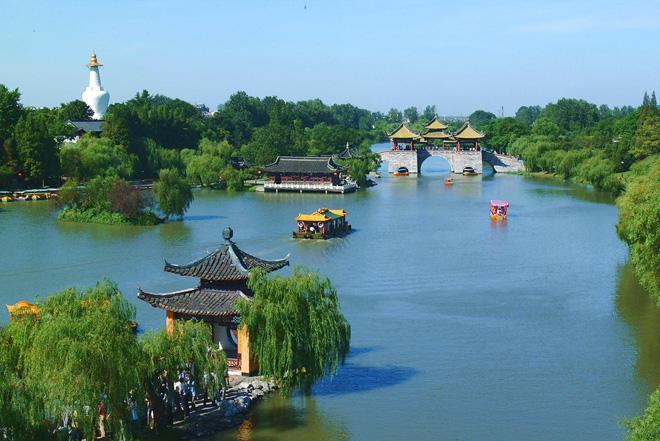
![Lingyin-Temple-65930[1]](https://hobbymart.net/wp-content/uploads/2022/04/Lingyin-Temple-659301-768x432.jpg)


